Optimization of Laminar Boundary Layers in Flow over a Flat Plate Using Recent Metaheuristic Algorithms
Abstract
:1. Introduction
2. Methods
2.1. Teaching Learning Based Optimization (TLBO)
2.2. Sine Cosine Optimization Algorithm (SCO)
2.3. Gray Wolf Optimization Algorithm (GWO)
2.3.1. Hunting
- Monitoring, tracking, and approaching the prey.
- Surrounding the prey and moving it until the prey is tired.
- Performing an attack on the prey.
2.3.2. Exploration
2.3.3. Attack
2.4. Whale Optimization Algorithm (WO)
2.4.1. Surrounding Prey
2.4.2. Attacking the Prey Using a Bubble-Net Method
2.4.3. Prey Exploration (Global Searching)
2.5. Salp Swarm Optimization Algorithm (SSO)
2.6. Harris Hawk Optimization Algorithm (HHO)
2.6.1. Exploration Phase
2.6.2. Transition from the Exploration Phase to the Attack Phase
2.6.3. Attack Phase
- Soft siege: The Harris hawk tries to de-energize its prey with false moves at this stage.
- Soft siege with progressive rapid dives: The prey has the energy to escape at this stage. The Harris hawk is still in soft encirclement before making a surprise leap. This stage is wiser than the previous stage. The following action to be taken before the hawks make the soft siege is given in Equation (30).
3. Modeling
3.1. Sample Problem for Linear Flow
- Local heat transfer coefficient at a distance of 0.4 m and 0.8 m from the beginning of the plate, the arithmetic average of the heat transfer coefficient of the plate,
- The heat flux from the plate to the air,
- Velocity at the end of the plate and thickness of the thermal boundary layer, are asked, and the solution is given below [34].
- Continuous regimen,
- Neglecting the radiation,
- The properties, temperature values of the plate, and the air are fixed.
3.2. Sample Cases for Linear Flow
- The thermal boundary layer thickness (),
- The heat flux (Q),
- The distance (x) from the edge.
4. Results
- -
- HHO is a population and swarm intelligence-based optimization algorithm.
- -
- Search is performed based on the average position in the exploratory state.
- -
- In the exploitation phase, the parametric value ensures that the exploitation is dynamic.
- -
- The r is randomly generated in the range of [0, 1]. Different strategic exploitation operations are carried out according to the value assigned for r and E.
- -
- Adding the Levy function to the exploit avoids local maximum and minimum.
- -
- By means of the E, r parametric values and the levy function, a substantial structure is obtained between exploration and exploitation.
5. Conclusions
Author Contributions
Funding
Institutional Review Board Statement
Informed Consent Statement
Data Availability Statement
Conflicts of Interest
References
- Fabbri, G. Heat Transfer Optimization in Finned Annular Ducts under Laminar-Flow Conditions. Heat Transf. Eng. 1998, 19, 42–54. [Google Scholar] [CrossRef]
- Zaki, G.M.; Al-Turki, A.M. Optimization of Multilayer Thermal Insulation for Pipelines. Heat Transf. Eng. 2000, 21, 63–70. [Google Scholar] [CrossRef]
- Li, Y.F.; Chow, W.K. Optimum Insulation-Thickness for Thermal and Freezing Protection. Appl. Energy 2005, 80, 23–33. [Google Scholar] [CrossRef]
- Ozdemir, M.; Parmaksizoglu, I.C. Mekanik Tesisatta Ekonomik Yalıtım Kalınlığı. Tesisat Mühendisliği Derg. 2006, 91, 39–45. [Google Scholar]
- Tuncer, M. The Optimization of the Thermal Insulation in the Heating and Cooling Residences. Master’s Thesis, Yildiz Technical University, Istanbul, Turkey, 2007. [Google Scholar]
- Madadi, R.R.; Balaji, C. Optimization of the Location of Multiple Discrete Heat Sources in a Ventilated Cavity Using Artificial Neural Networks and Micro Genetic Algorithm. Int. J. Heat Mass Transf. 2008, 51, 2299–2312. [Google Scholar] [CrossRef]
- Hetmaniok, E.; Słota, D.; Zielonka, A. Determination of the Heat Transfer Coefficient by Using the Ant Colony Optimization Algorithm. In Parallel Processing and Applied Mathematics; Wyrzykowski, R., Dongarra, J., Karczewski, K., Waśniewski, J., Eds.; Springer: Berlin/Heidelberg, Germany, 2012; pp. 470–479. [Google Scholar]
- Karami, A.; Rezaei, E.; Shahhosseni, M.; Aghakhani, M. Optimization of Heat Transfer in an Air Cooler Equipped with Classic Twisted Tape Inserts Using Imperialist Competitive Algorithm. Exp. Therm. Fluid Sci. 2012, 38, 195–200. [Google Scholar] [CrossRef]
- Rao, R.V.; More, K.C. Optimal Design of the Heat Pipe Using TLBO (Teaching–Learning-Based Optimization) Algorithm. Energy 2015, 80, 535–544. [Google Scholar] [CrossRef]
- Yang, J.; Lourenço, M.I.; Estefen, S.F. Thermal Insulation of Subsea Pipelines for Different Materials. Int. J. Press. Vessel. Pip. 2018, 168, 100–109. [Google Scholar] [CrossRef]
- Akpinar, M. Application of Genetic Algorithm for Multi-Objective Optimizing of Heat-Transfer Parameters. Sak. Univ. J. Sci. 2019, 23, 1123–1130. [Google Scholar] [CrossRef] [Green Version]
- Gunal, O.; Akpinar, M.; Ovaz Akpinar, K. Determination of Insulation Parameters with Optimization Algorithms. In Proceedings of the 2022 International Conference on Decision Aid Sciences and Applications (DASA), Chiangrai, Thailand, 23 March 2022; pp. 1711–1714. [Google Scholar]
- Gunal, O.; Akpinar, M.; Ovaz Akpinar, K. Performance Evaluation of Metaheuristic Optimization Techniques in Insulation Problem. In Proceedings of the ITT 2022: 8th International Conference on Information Technology Trends, Dubai, United Arab Emirates, 25 May 2022; pp. 1–5. [Google Scholar]
- Erdoğmuş, P. Nature Inspired Optimization Algorithms and Their Performance on the Solution of Nonlinear Equation Systems. Sak. Univ. J. Comput. Inf. Sci. 2018, 1, 44–57. [Google Scholar]
- Özger, Y.E.; Akpınar, M.; Musayev, Z.; Yaz, M. Electrical Load Forecasting Using Genetic Algorithm Based Holt-Winters Exponential Smoothing Method. Sak. Univ. J. Comput. Inf. Sci. 2019, 2, 108–123. [Google Scholar] [CrossRef]
- Ghalambaz, M.; Mehryan, S.A.M.; Mozaffari, M.; Younis, O.; Ghosh, A. The Effect of Variable-Length Fins and Different High Thermal Conductivity Nanoparticles in the Performance of the Energy Storage Unit Containing Bio-Based Phase Change Substance. Sustainability 2021, 13, 2884. [Google Scholar] [CrossRef]
- Song, E.-H.; Lee, K.-B.; Rhi, S.-H. Thermal and Flow Simulation of Concentric Annular Heat Pipe with Symmetric or Asymmetric Condenser. Energies 2021, 14, 3333. [Google Scholar] [CrossRef]
- Švajlenka, J.; Kozlovská, M. Analysis of the Thermal–Technical Properties of Modern Log Structures. Sustainability 2021, 13, 2994. [Google Scholar] [CrossRef]
- Djeffal, F.; Bordja, L.; Rebhi, R.; Inc, M.; Ahmad, H.; Tahrour, F.; Ameur, H.; Menni, Y.; Lorenzini, G.; Elagan, S.K.; et al. Numerical Investigation of Thermal-Flow Characteristics in Heat Exchanger with Various Tube Shapes. Appl. Sci. 2021, 11, 9477. [Google Scholar] [CrossRef]
- Lebedevas, S.; Čepaitis, T. Parametric Analysis of the Combustion Cycle of a Diesel Engine for Operation on Natural Gas. Sustainability 2021, 13, 2773. [Google Scholar] [CrossRef]
- Xiao, H.; Dong, Z.; Long, R.; Yang, K.; Yuan, F. A Study on the Mechanism of Convective Heat Transfer Enhancement Based on Heat Convection Velocity Analysis. Energies 2019, 12, 4175. [Google Scholar] [CrossRef] [Green Version]
- Rehman, K.U.; Shatanawi, W.; Ashraf, S.; Kousar, N. Numerical Analysis of Newtonian Heating Convective Flow by Way of Two Different Surfaces. Appl. Sci. 2022, 12, 2383. [Google Scholar] [CrossRef]
- Erdoğmuş, P. A New Solution Approach for Non-Linear Equation Systems with Grey Wolf Optimizer. Sak. Univ. J. Comput. Inf. Sci. 2018, 1, B2. [Google Scholar] [CrossRef] [Green Version]
- Mirjalili, S. SCA: A Sine Cosine Algorithm for Solving Optimization Problems. Knowl.-Based Syst. 2016, 96, 120–133. [Google Scholar] [CrossRef]
- Demirci, H.; Yurtay, N. Effect of the Chaotic Crossover Operator on Breeding Swarms Algorithm. Sak. Univ. J. Comput. Inf. Sci. 2021, 4, 120–130. [Google Scholar] [CrossRef]
- Rao, R.V.; Savsani, V.J.; Vakharia, D.P. Teaching–Learning-Based Optimization: A Novel Method for Constrained Mechanical Design Optimization Problems. Comput. Des. 2011, 43, 303–315. [Google Scholar] [CrossRef]
- Mirjalili, S. How Effective Is the Grey Wolf Optimizer in Training Multi-Layer Perceptrons. Appl. Intell. 2015, 43, 150–161. [Google Scholar] [CrossRef]
- Mirjalili, S.; Lewis, A. The Whale Optimization Algorithm. Adv. Eng. Softw. 2016, 95, 51–67. [Google Scholar] [CrossRef]
- Mirjalili, S.; Gandomi, A.H.; Mirjalili, S.Z.; Saremi, S.; Faris, H.; Mirjalili, S.M. Salp Swarm Algorithm: A Bio-Inspired Optimizer for Engineering Design Problems. Adv. Eng. Softw. 2017, 114, 163–191. [Google Scholar] [CrossRef]
- Ozsaglam, M.Y.; Cunkas, M. Particle Swarm Optimization Algorithm for Solving Optimızation Problems. J. Polytech. 2008, 11, 299–305. [Google Scholar]
- Heidari, A.A.; Mirjalili, S.; Faris, H.; Aljarah, I.; Mafarja, M.; Chen, H. Harris Hawks Optimization: Algorithm and Applications. Futur. Gener. Comput. Syst. 2019, 97, 849–872. [Google Scholar] [CrossRef]
- Moayedi, H.; Osouli, A.; Nguyen, H.; Rashid, A.S.A. A Novel Harris Hawks’ Optimization and k-Fold Cross-Validation Predicting Slope Stability. Eng. Comput. 2021, 37, 369–379. [Google Scholar] [CrossRef]
- Akdag, O.; Ates, A.; Yeroglu, C. Minimization of Active Power Losses Using Harris Hawks Optimization Algorithm. Dokuz Eylül Üniversitesi Mühendislik Fakültesi Fen Ve Mühendislik Derg. 2020, 22, 481–490. [Google Scholar] [CrossRef]
- Halici, F.; Gunduz, M. Isı Transferi ve Örnek Problemler—Isı Geçişi; Birsen Yayinlari: Istanbul, Turkey, 2013. [Google Scholar]
- Wang, P.-K.; Liu, Y.-J.; Lin, J.-T.; Wang, Z.-W.; Cheng, H.-C.; Huang, B.-X.; Chang, G.W. Harris Hawks Optimization-Based Algorithm for STATCOM Voltage Regulation of Offshore Wind Farm Grid. Energies 2022, 15, 3003. [Google Scholar] [CrossRef]
- Dev, K.; Maddikunta, P.K.R.; Gadekallu, T.R.; Bhattacharya, S.; Hegde, P.; Singh, S. Energy Optimization for Green Communication in IoT Using Harris Hawks Optimization. IEEE Trans. Green Commun. Netw. 2022, 6, 685–694. [Google Scholar] [CrossRef]
- Naeijian, M.; Rahimnejad, A.; Ebrahimi, S.M.; Pourmousa, N.; Gadsden, S.A. Parameter Estimation of PV Solar Cells and Modules Using Whippy Harris Hawks Optimization Algorithm. Energy Rep. 2021, 7, 4047–4063. [Google Scholar] [CrossRef]
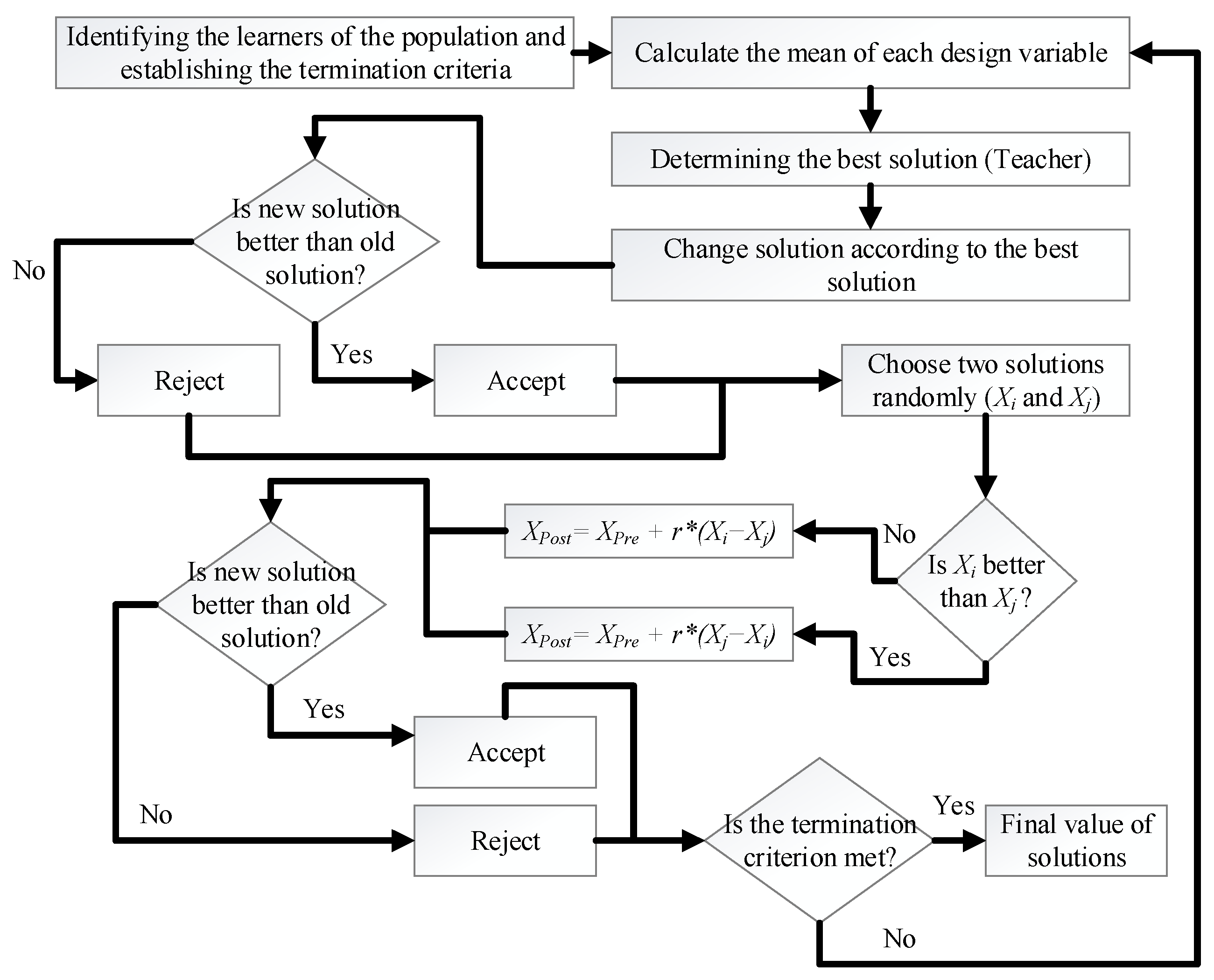
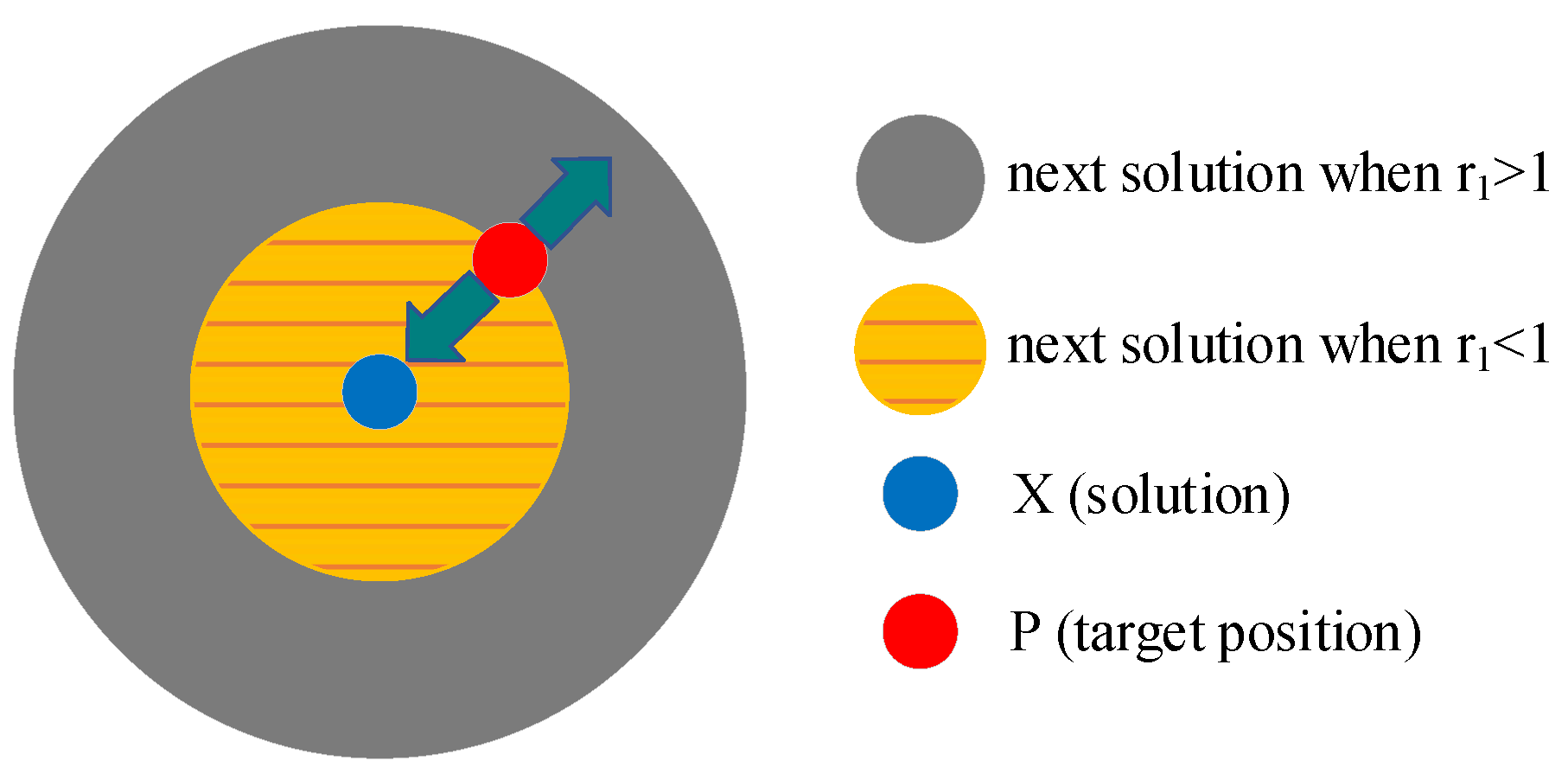
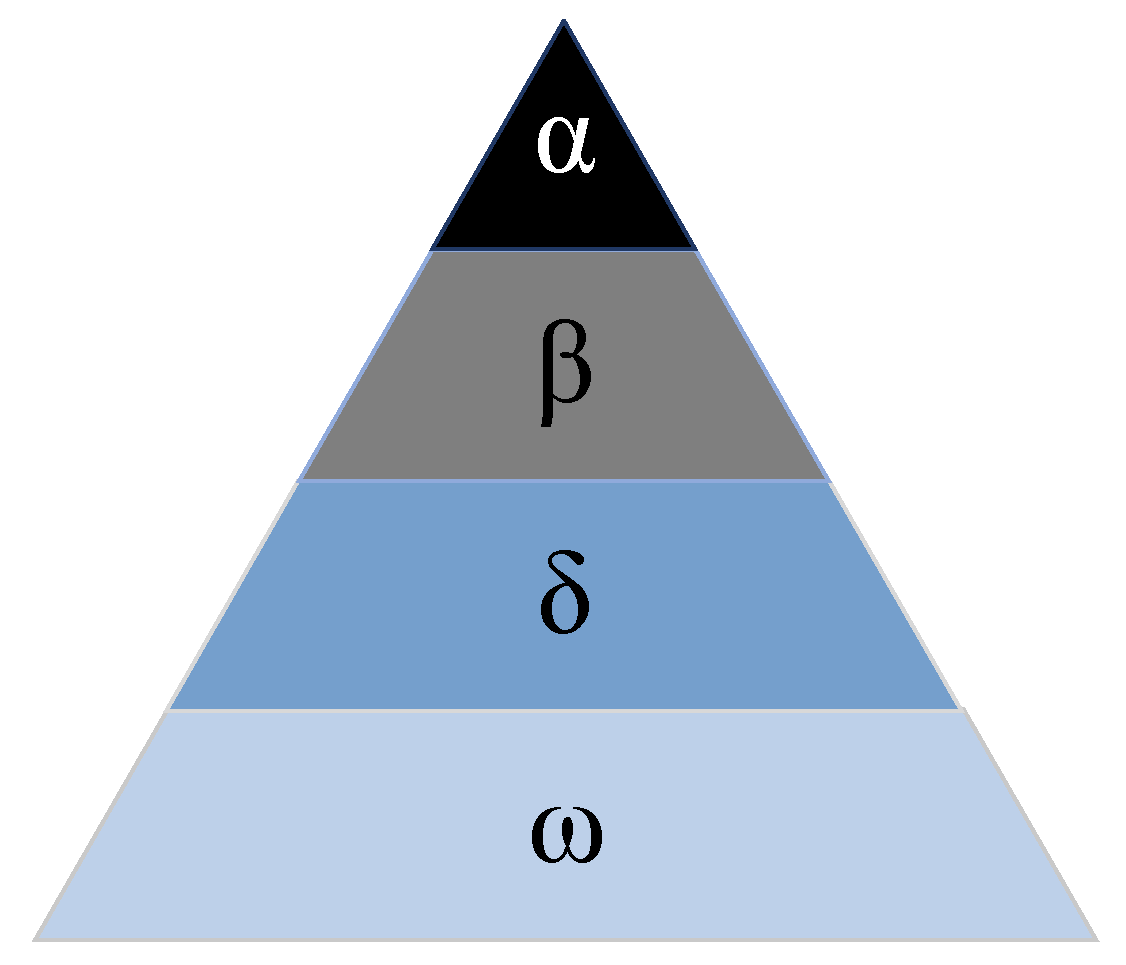
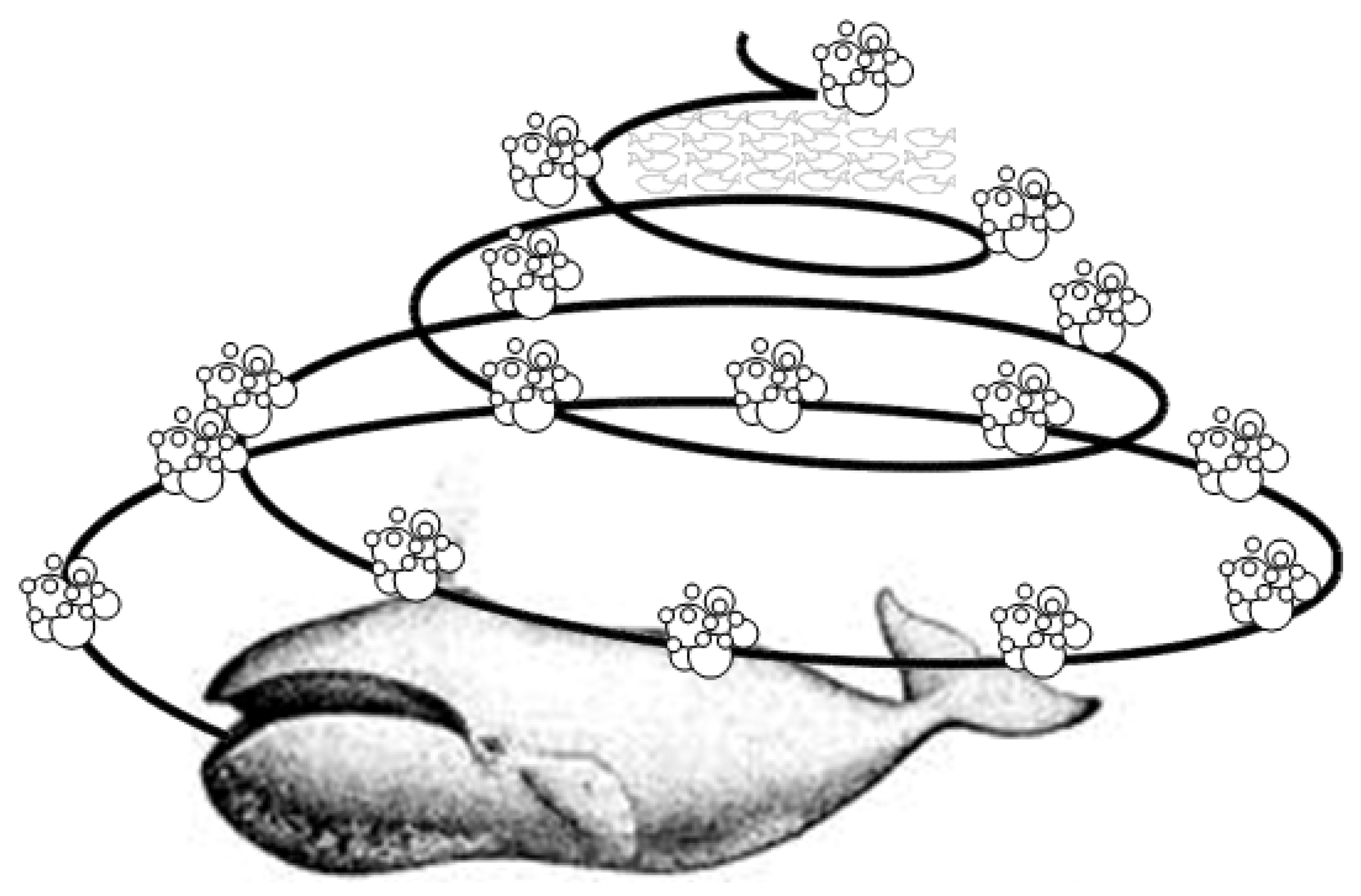
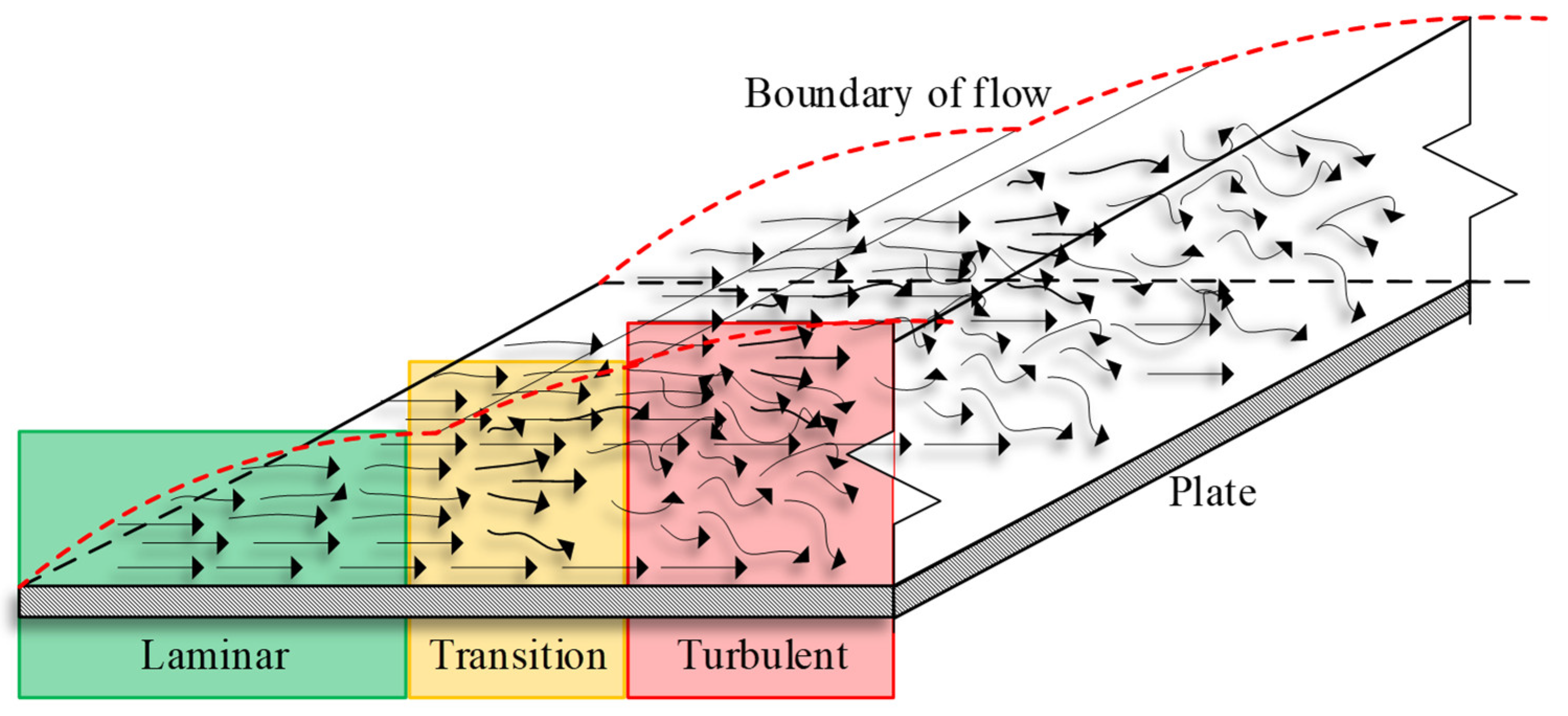
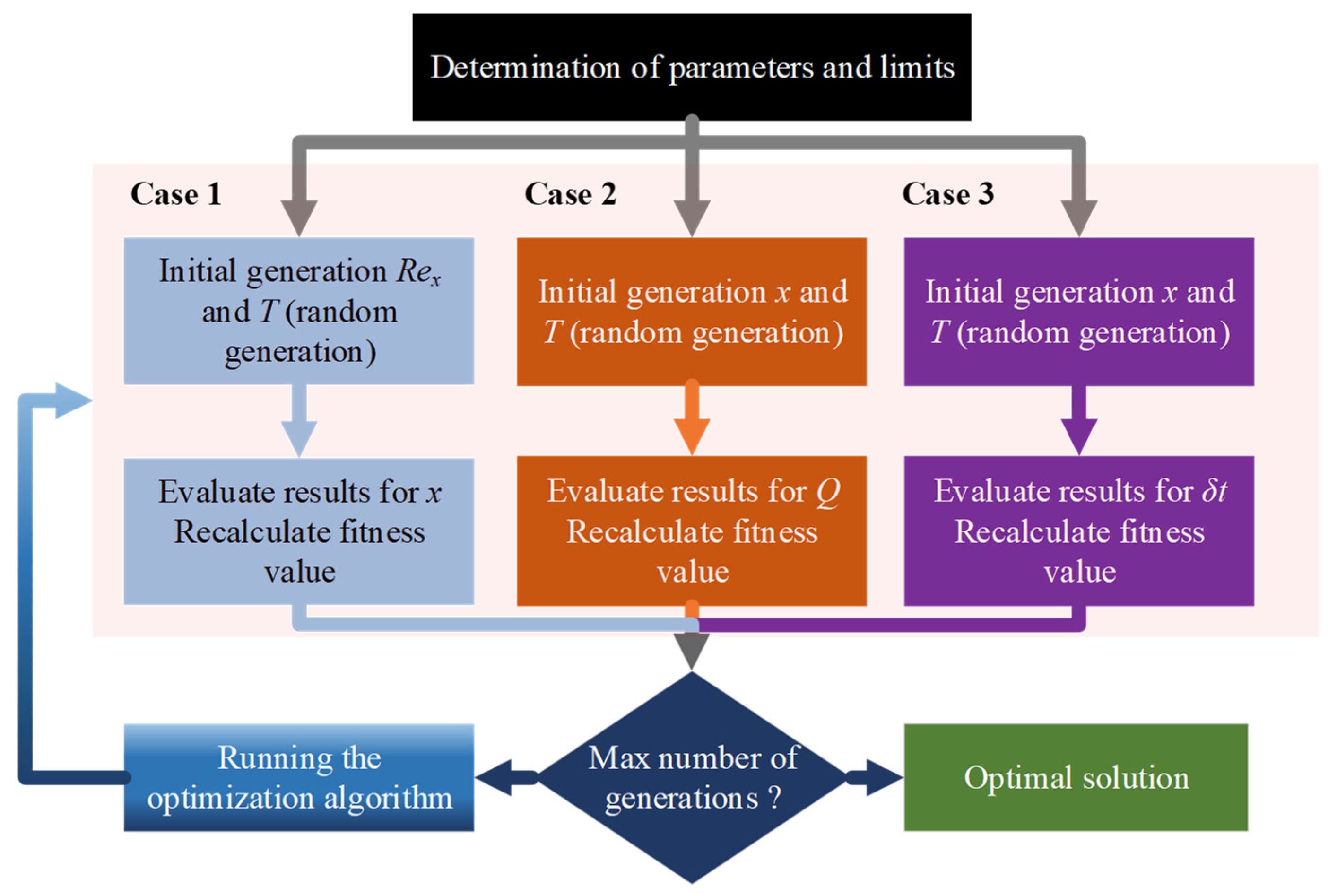
| (a) | |||||||
| Test | x | T | Rex | δt | Q | Time (s) | Error (%) |
| TLBO | 0.08447 | 80 | 3843.735 | 7.073 | 189.9772 | 1.643198 | 0.0248671 |
| SCO | 0.08448 | 80 | 3844.1874 | 7.0734 | 189.966 | 1.0632657 | 0.0367085 |
| GWO | 0.084452 | 80 | 3842.9436 | 7.0723 | 189.9967 | 0.1437 | 0.0035524 |
| WO | 0.084449 | 80 | 3842.8114 | 7.0721 | 190 | 0.343593 | 0 |
| SSO | 0.084449 | 80 | 3842.8115 | 7.0721 | 190 | 1.01691 | 0 |
| HHO | 0.084449 | 80 | 3842.8114 | 7.0721 | 190 | 0.348538 | 0 |
| (b) | |||||||
| Test | x | T | Rex | δt | Q | Time (s) | Error (%) |
| TLBO | 1.2266 | 122.5319 | 50,000 | 27.9605 | 190 | 4.775296 | 0 |
| SCO | 1.2263 | 122.43045 | 50,000 | 27.95459 | 189.7014 | 2.37774 | 0.0244579 |
| GWO | 1.2266 | 122.5285 | 50,000 | 27.9603 | 189.98988 | 0.1356161 | 0 |
| WO | 1.2266 | 122.5319 | 50,000 | 27.9605 | 190 | 0.135099 | 0 |
| SSO | 1.2266 | 122.5319 | 50,000 | 27.9605 | 190 | 0.9328725 | 0 |
| HHO | 1.2266 | 122.5319 | 50,000 | 27.9605 | 190 | 0.2854132 | 0 |
| (c) | |||||||
| Test | x | T | Rex | δt | Q | Time (s) | Error (%) |
| TLBO | 0.610168 | 98.6629 | 26,416.801 | 19.3206 | 159.68272 | 4.594048 | 0.010248 |
| SCO | 0.6101 | 99.52021 | 26,353.486 | 19.33314 | 163.71016 | 2.425644 | 0.003477 |
| GWO | 0.6101 | 99.29481 | 26,368.825 | 19.3294 | 162.65995 | 0.148997 | 0.009344 |
| WO | 0.61 | 95.0744 | 26,659.71 | 19.2584 | 142.8026 | 0.1441 | 0 |
| SSO | 0.61 | 102.494 | 26,148.811 | 19.38185 | 177.62358 | 0.979427 | 0 |
| HHO | 0.61 | 97.78142 | 26,470.417 | 19.30326 | 155.56209 | 0.343977 | 0 |
| (a) | |||||||
| Test | x | T | Rex | δt | Q | Time (s) | Error (%) |
| TLBO | 0.158392 | 84.14076 | 8489.7097 | 12.35754 | 140.00307 | 1.86909 | 0.0021929 |
| SCO | 0.0814832 | 81.53445 | 3671.4047 | 10.61715 | 140.04808 | 1.1988065 | 0.0343429 |
| GWO | 0.477998 | 88.19405 | 21,313.158 | 15.05907 | 140.00393 | 0.163558 | 0.0028071 |
| WO | 0.661705 | 87.03197 | 29,459.85 | 14.28488 | 140.00005 | 0.253899 | 0.0000357 |
| SSO | 0.447057 | 84.06552 | 20,087.347 | 12.30769 | 140 | 1.1682 | 0 |
| HHO | 0.088826 | 90.91476 | 3916.7569 | 16.87286 | 140 | 0.552467 | 0 |
| (b) | |||||||
| Test | x | T | Rex | δt | Q | Time (s) | Error (%) |
| TLBO | 0.470381 | 98.87179 | 11,691.195 | 16.34188 | 189.9847 | 1.798275 | 0.0080526 |
| SCO | 0.26131 | 89.4444 | 11,656.033 | 11.71522 | 189.9228 | 1.1085021 | 0.0406316 |
| GWO | 0.61468 | 93.5664 | 26,766.681 | 13.73579 | 189.98671 | 0.1363648 | 0.0069947 |
| WO | 0.319576 | 102.6246 | 13,692.594 | 18.18359 | 189.9999 | 0.1592901 | 0.0000526 |
| SSO | 0.275089 | 96.42515 | 11,978.555 | 15.13887 | 190 | 1.1223129 | 0 |
| HHO | 0.30621 | 92.81981 | 13,365.664 | 13.36822 | 190 | 0.443047 | 0 |
| (c) | |||||||
| Test | x | T | Rex | δt | Q | Time (s) | Error (%) |
| TLBO | 0.430273 | 86.68083 | 13,681.897 | 12.26104 | 160.43663 | 1.830323 | 0.0041326 |
| SCO | 0.378001 | 88.67019 | 16,704.573 | 13.41592 | 160.46 | 1.1380122 | 0.0186997 |
| GWO | 0.451014 | 93.4736 | 19,813.337 | 16.21215 | 160.4334 | 0.190655 | 0.0021193 |
| WO | 0.3577 | 90.8456 | 15,862.732 | 14.6839 | 160.43 | 0.1707 | 0 |
| SSO | 0.363114 | 89.35783 | 16,097.652 | 13.81859 | 160.43 | 1.1523682 | 0 |
| HHO | 0.167105 | 88.45738 | 7352.8772 | 13.29482 | 160.43 | 0.476135 | 0 |
| (a) | |||||||
| Test | x | T | Rex | δt | Q | Time (s) | Error (%) |
| TLBO | 0.0845 | 80 | 3844.29 | 7.07348 | 189.963 | 1.576858 | 0.019513 |
| SCO | 0.0847 | 80 | 3468.218 | 7.08189 | 189.739 | 1.0017729 | 0.138431 |
| GWO | 0.0845 | 80 | 3458.94 | 7.07228 | 189.996 | 0.1358301 | 0.002545 |
| WO | 0.0844 | 80 | 3842.812 | 7.07211 | 190 | 0.2677318 | 0.000141 |
| SSO | 0.0845 | 80 | 3842.812 | 7.0721 | 190 | 0.966238 | 0 |
| HHO | 0.0845 | 80 | 3842.811 | 7.0721 | 190 | 0.37806 | 0 |
| (b) | |||||||
| Test | x | T | Rex | δt | Q | Time (s) | Error (%) |
| TLBO | 1 | 116.7512 | 41,347.866 | 25.1214 | 190 | 1.458449 | 0 |
| SCO | 1 | 116.5945 | 33,101.854 | 25.11808 | 189.4431 | 0.928728 | 0.0132158 |
| GWO | 1 | 116.7477 | 41,348.225 | 25.12136 | 189.9876 | 0.1133109 | 0.0001592 |
| WO | 1 | 116.7512 | 41,347.867 | 25.1214 | 190 | 0.193081 | 0 |
| SSO | 0.9979 | 116.696 | 41,268.24 | 25.09429 | 190 | 1.0228487 | 0.107916 |
| HHO | 1 | 116.751 | 41,347.866 | 25.1214 | 190 | 0.32802 | 0 |
| (c) | |||||||
| Test | x | T | Rex | δt | Q | Time (s) | Error (%) |
| TLBO | 0.633627 | 99.4148 | 27,381.481 | 19.7009 | 160.16881 | 1.453665 | 0.5147959 |
| SCO | 0.625676 | 101.384 | 26,900.652 | 19.6103 | 170.27978 | 0.906529 | 0.052551 |
| GWO | 0.626103 | 100.3924 | 26,988.363 | 19.60029 | 165.6393 | 0.116582 | 0.0014796 |
| WO | 0.6293 | 97.3928 | 27,337.216 | 19.6 | 151.3611 | 0.1301 | 0 |
| SSO | 0.622937 | 103.3093 | 23,974.905 | 19.6 | 179.5288 | 0.932002 | 0 |
| HHO | 0.62985 | 96.9205 | 27,394.438 | 19.6 | 149.113 | 0.28821 | 0 |
| Error (%) | GWO | HHO | SCO | SSO | TLBO | WO | Sum |
|---|---|---|---|---|---|---|---|
| Case 1 | |||||||
| Minimum | 0.0035524 | 0 | 0.0367085 | 0 | 0.0248671 | 0 | 0.065128 |
| Maximum | 0 | 0 | 0.02445785 | 0 | 0 | 0 | 0.02445785 |
| Target | 0.003477 | 0 | 0.003477 | 0 | 0.010248 | 0 | 0.017202 |
| Case 2 | |||||||
| Minimum | 0.002807143 | 0 | 0.034342857 | 0 | 0.002192857 | 0.0000357143 | 0.039378571 |
| Maximum | 0.006994737 | 0 | 0.040631579 | 0 | 0.008052632 | 0.0000526316 | 0.05573158 |
| Target | 0.0021193 | 0 | 0.01869974 | 0 | 0.00413264 | 0 | 0.02495168 |
| Case 3 | |||||||
| Minimum | 0.002545 | 0 | 0.138431 | 0 | 0.019513 | 0.000141 | 0.16063 |
| Maximum | 0.00015923 | 0 | 0.01321582 | 0.17916 | 0 | 0 | 0.12129101 |
| Target | 0.0014796 | 0 | 0.052551 | 0 | 0.5147959 | 0 | 0.5688265 |
| Average | 0.00257049 | 0 | 0.040279483 | 0.011990662 | 0.064866903 | 0.0000254829 | 0.019955504 |
Publisher’s Note: MDPI stays neutral with regard to jurisdictional claims in published maps and institutional affiliations. |
© 2022 by the authors. Licensee MDPI, Basel, Switzerland. This article is an open access article distributed under the terms and conditions of the Creative Commons Attribution (CC BY) license (https://creativecommons.org/licenses/by/4.0/).
Share and Cite
Gunal, O.; Akpinar, M.; Ovaz Akpinar, K. Optimization of Laminar Boundary Layers in Flow over a Flat Plate Using Recent Metaheuristic Algorithms. Energies 2022, 15, 5069. https://doi.org/10.3390/en15145069
Gunal O, Akpinar M, Ovaz Akpinar K. Optimization of Laminar Boundary Layers in Flow over a Flat Plate Using Recent Metaheuristic Algorithms. Energies. 2022; 15(14):5069. https://doi.org/10.3390/en15145069
Chicago/Turabian StyleGunal, Ozen, Mustafa Akpinar, and Kevser Ovaz Akpinar. 2022. "Optimization of Laminar Boundary Layers in Flow over a Flat Plate Using Recent Metaheuristic Algorithms" Energies 15, no. 14: 5069. https://doi.org/10.3390/en15145069
APA StyleGunal, O., Akpinar, M., & Ovaz Akpinar, K. (2022). Optimization of Laminar Boundary Layers in Flow over a Flat Plate Using Recent Metaheuristic Algorithms. Energies, 15(14), 5069. https://doi.org/10.3390/en15145069







